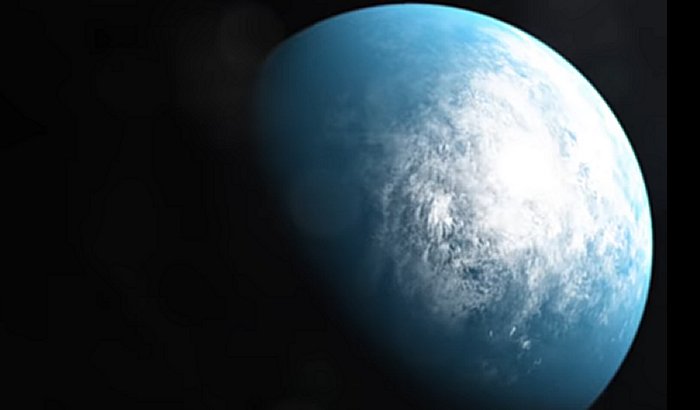Eddie Gonzales Jr. – MessageToEagle.com – TESS (NASA’s planet-hunter satellite) has discovered its first Earth-size planet in its star’s habitable zone, which allows the presence of liquid water on the surface.
The discovered planet, named TOI 700 d, is only 100 light-years away.

“TESS was designed and launched specifically to find Earth-sized planets orbiting nearby stars,” said Paul Hertz, NASA astrophysics division director, said in a press release.
TOI 700 is a small, cool M dwarf star located just over 100 light-years away in the southern constellation Dorado. It’s roughly 40% of the Sun’s mass and size and about half its surface temperature. The star appears in 11 of the 13 sectors TESS observed during the mission’s first year, and scientists caught multiple transits by its three planets.
The star was originally misclassified in the TESS database as being more similar to our Sun, which meant the planets appeared larger and hotter than they really are. Several researchers, including Alton Spencer, a high school student working with members of the TESS team, identified the error.
“When we corrected the star’s parameters, the sizes of its planets dropped, and we realized the outermost one was about the size of Earth and in the habitable zone,” said Emily Gilbert, a graduate student at the University of Chicago.

“Additionally, in 11 months of data, we saw no flares from the star, which improves the chances TOI 700 d is habitable and makes it easier to model its atmospheric and surface conditions.”
The innermost planet, called TOI 700 b, is almost exactly Earth-size, is probably rocky and completes an orbit every 10 days. The middle planet, TOI 700 c, is 2.6 times larger than Earth – between the sizes of Earth and Neptune – orbits every 16 days and is likely a gas-dominated world. TOI 700 d, the outermost known planet in the system and the only one in the habitable zone, measures 20% larger than Earth, orbits every 37 days and receives from its star 86% of the energy that the Sun provides to Earth.
All of the planets are thought to be tidally locked to their star, which means they rotate once per orbit so that one side is constantly bathed in daylight.
For now, astronomers cannot say what this planet is made of.
While the exact conditions on TOI 700 d are unknown, scientists can use current information, like the planet’s size and the type of star it orbits, to generate computer models and make predictions. Researchers at NASA’s Goddard Space Flight Center in Greenbelt, Maryland, modeled 20 potential environments of TOI 700 d to gauge if any version would result in surface temperatures and pressures suitable for habitability.
Future missions can be very helpful to shed light on the planet’s atmosphere and composition.
Written by Eddie Gonzales Jr. – MessageToEagle.com Staff






